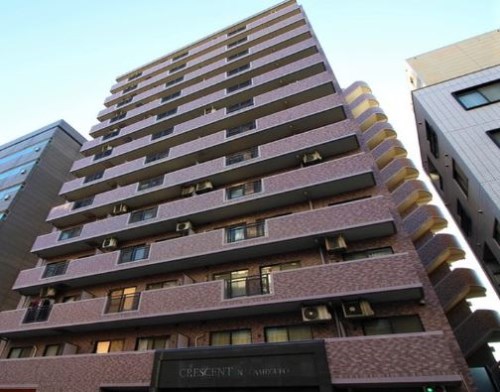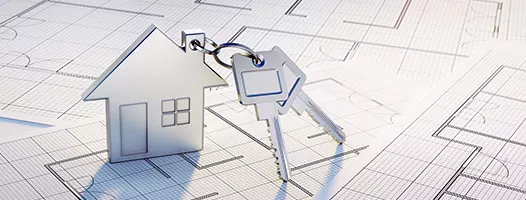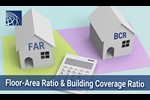What are energy conservation standards and energy-saving housing?

The mandatory compliance with energy conservation standards for newly built houses starting in 2025 is taking a growing interest in energy-saving houses. This section explains how the energy-saving performance of houses works, how energy conservation standards are evaluated, and what types of energy-saving houses attract attention.
What are energy-saving performance and energy conservation standards?
Energy conservation standards are defined in Building Energy Efficiency Act (Act on Improvement of Energy Consumption Performance of Buildings) as "Standards for the structure and equipment of buildings necessary to ensure the energy-saving performance that buildings should have." Energy-saving performance is evaluated based on 2 standards: “Building Palstar Index (BPI) (Thermal Insulation Performance (TIP))” and “Building Energy Index (BEI).”

What is Building Palstar Index (Thermal Insulation Performance)?
It is an index that looks at the thermal insulation performance of a building from two factors: "ease of heat escape from the building" and "ease of ingress of solar heat into buildings ". The outer shell refers to the part of a building that separates the interior from the outside, including exterior walls, windows, floors, roofs, and ceilings.

Outer shell performance of housing
⓵ Average outer shell heat transfer coefficient (UA-value)
The extent of heat loss from the building is indicated by "average outer shell heat transfer coefficient (UA-value)". It is calculated by dividing the amount of heat escaping from the building's exterior walls, windows, floor, roof, and ceiling by the surface area of these outer shells. The lower the UA-value of the building, the less heat escaping from the inside of the building to the outside, and the higher the thermal insulation performance.
② Average solar heat gain coefficient during the cooling season (ηAC-value)
The ease of solar heat penetration into a building is indicated by “average solar heat gain coefficient during the cooling season (ηAC value). It is calculated by dividing the solar heat amount that enters the building through the exterior walls, windows, roof, and ceiling by the surface area of these outer shells. The smaller the ηAC value, the less solar heat enters the building and the higher the thermal insulation performance.
Evaluation of thermal insulation performance
Since climatic conditions vary greatly depending on the region of Japan, the whole country is divided into 8 regions, and standard values for UA-value and ηAC value are set for each region. UA-value and ηAC value are evaluated according to the regional classification, and the lower of the 2 values is displayed. There are 7 grades from 1 ~ 7, with the higher number indicating higher thermal insulation performance.
Building Energy Index (BEI)
Building energy index is the value obtained by converting the energy consumption of the equipment used in the building into the amount of heat. It is calculated by subtracting the energy created by solar power generation equipment, etc. from the energy consumed by air conditioning, ventilation, hot water supply, lighting, etc.


The value obtained by calculating the primary energy consumption of the entire building at the time of building design is called "design primary energy consumption". In reality, the calculation is performed by a dedicated system, etc. However, if the “design primary energy consumption” is smaller than the “standard primary energy consumption” as a result of the primary energy consumption calculation, it means that the building complies with the energy conservation standard.
The “standard primary energy consumption” varies depending on the conditions such as the regional classification and the floor area of the house to be designed, and the types of equipment and devices to be used.

Assessment of primary energy consumption
Building Energy Index (BEI) is an index that shows how much energy consumption has been reduced from the energy conservation standards set by the government and is evaluated by the reduction rate.
|
Building Energy Index=BEI BBEI = Design Primary Energy Consumption / Standard Primary Energy Consumption Energy Conservation Standards : BEI ≦ 1.0 |
“Thermal Insulation Performance (TIP) Grade” and “Primary Energy Consumption Grade”
In this way, energy conservation standards are determined by a building's thermal insulation performance, average solar heat gain, and primary energy consumption, each of which has a standard grade.

Energy conservation standards were first established in 1980 in response to the Energy Conservation Act (Act on the Rational Use of Energy) and have been revised many times since then. Most recently, Thermal Insulation Performance grades 5, 6 and 7 were established in 2022 and Primary Energy Consumption grade 6 in 2023. After April 2025, all houses will be required to meet Thermal Insulation Performance grade 4 and Primary Energy Consumption grade 4 or higher. In addition, in 2030 energy conservation standards will be raised to the ZEH standard level, which will require Thermal Insulation Performance Grade 5 and Primary Energy Consumption Grade 6.
According to the Ministry of Land, Infrastructure, Transport and Tourism, as of 2020, about 80% of newly built houses meet energy conservation standards, and about 25% have ZEH standard level, which have higher energy-saving performance. The standards that will become mandatory from April 2025 are generally considered to have been largely achieved for current newly-built houses.
Types of energy-efficient housing
There are different types of energy-efficient houses that meet energy conservation standards. Each has different performance and feature. Here are some typical energy-efficient houses
● ZEH (Zero Energy Housing) ZEH Standard Links
Thermal insulation performance grade 5 or higher, primary energy consumption grade 6 or higher
ZEH is a house that achieves a zero-energy balance not only by improving energy efficiency but also by utilizing renewable energy sources such as solar power generation. This is a new evaluation standard for energy-efficient housing established to achieve a decarbonized society by 2050.
● Long-lasting Quality Housing
Thermal insulation performance grade 5 or higher, and primary energy consumption grade 6 or higher
Long-lasting quality housing is housing that can be lived in in excellent condition over a long period of time and is at the same level as ZEH with respect to energy-saving performance. This house was certified in accordance with the “Act for Promotion of Long-Life Quality Housing” enacted in June 2009.
● Low-carbon housing
Thermal insulation performance grade 5 or higher, and primary energy consumption grade 6 or higher
Low-carbon housing is housing with systems and equipment designed to reduce carbon dioxide emissions.
This is a house that has been certified under the “Low- carbon Building Certification System” according to the “Low Carbon City Act” (Eco-City Act) of 2012.
● LCCM Housing (Life Cycle Carbon Minus)
Thermal insulation performance grade 5 or higher, and primary energy consumption grade 6 or higher
This housing is designed to reduce CO₂ emissions as much as possible during construction, operation, and disposal, and to generate renewable energy using solar power generation, etc., to achieve a negative CO₂ balance throughout the entire life cycle, including CO₂ emissions at the time of house construction. LCCM housing is currently positioned as the ultimate goal in housing for a low-carbon societ
How to check energy conservation standards
Building-Housing Energy-efficiency Labeling System (BELS)
From April 2024, a system to display energy-saving performance labels in advertisements for sales and rental of newly built buildings has begun. This allows for the understanding and comparison of energy-saving performance when purchasing or renting a building.
The label shows the energy consumption performance and thermal insulation performance as ★ marks and numbers.

Example of energy-saving performance label
The type of label differs depending on the type of building (residential (dwelling unit/residential building), non-residential, and complex buildings), the evaluation method (self-evaluation, third-party evaluation), and with/without renewable energy facilities.
https://www.mlit.go.jp/shoene-label/
What is the energy efficiency of pre-owned housing?
It is also recommended that energy-saving performance labels be displayed at the time of sale and rental of pre-owned houses. Since many pre-owned houses are not evaluated for energy efficiency at the time of construction, in November 2024, “Energy-Saving Part Label” was put into operation to indicate the parts that have undergone renovations that contribute to improving energy-saving performance. In addition, the government is promoting energy conservation in pre-owned houses through a number of support programs, such as subsidy programs for renovating pre-owned houses into houses with high energy-saving performance, and tax reduction programs.

- Apartments & Houses for Sale in Tokyo
- Listings of apartments, condominiums, and houses available for purchase in Tokyo.


















